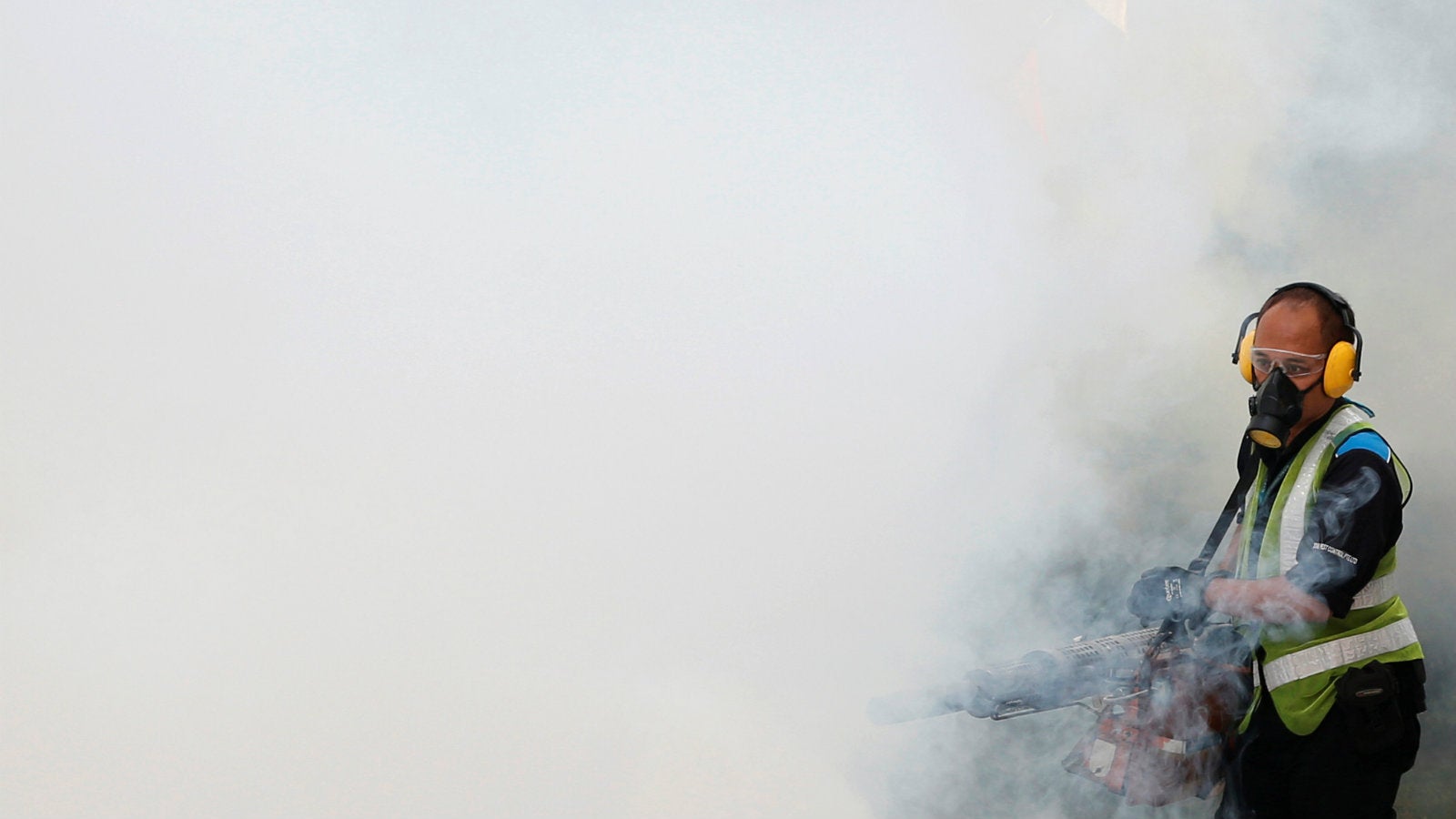With 13 Indians affected in Singapore, the deadly Zika virus now looms over 1.3 billion
The deadly Zika virus has reached too close to India for comfort.


The deadly Zika virus has reached too close to India for comfort.
“According to our mission in Singapore, 13 Indian nationals have tested positive for Zika in Singapore,” Vikas Swarup, spokesman for India’s external affairs ministry, told Reuters on Sept. 1.
On Aug. 27, Singapore had announced the first locally contracted case of the mosquito-borne disease. By Aug. 29, there were 82 persons infected there.
Foreign construction workers in the city-state are the worst affected, Reuters said. However, it is not yet clear if the affected Indians work in the construction industry.
Zika can be a major risk for India considering the country’s 1.3 billion population and creaky healthcare system. The country is already struggling to bring mosquito-borne diseases like dengue and chickungunya under control. These two diseases alone kill scores of Indians almost every year and the number of cases reported have been on the rise in recent months.
Singapore is among the favourite global destinations for Indians. More than one million of them visited the city-state in 2015, making them the third-biggest group of tourists in the southeast Asian country. This makes India particularly exposed to the epidemic.
However, India had seen Zika before.
In 1952, a group of scientists was commissioned to work out what diseases should India’s National Institute of Virology in Pune focus its efforts on. The group discovered that a “significant number” of people had been exposed to Zika.
After first being detected in Brazil last year, the latest bout of Zika has spread to several countries, including the US, Argentina, Colombia, Mexico, Panama, Peru, Vietnam, and the Bahamas, among others. Some Asian countries, including Bangladesh, Malaysia, and the Philippines, and now Singapore, too, have reported cases of infection.
The Zika virus is transmitted by Aedes mosquitoes, but can also be transmitted sexually and through blood. Aedes mosquitoes are the ones that spread dengue, chikungunya, and yellow fever, too. The disease was first described formally in 1952 after the virus was detected a few years earlier in the Zika jungles of Uganda.
Symptoms of Zika include mild fever, skin rashes, conjunctivitis, muscle pain, joint pain, and headaches. It can cause microcephaly, a rare birth defect wherein the baby’s head is significantly smaller than normal.
While some pharmaceutical companies are reportedly working on it, according to the WHO, there is currently no treatment or vaccine for Zika.